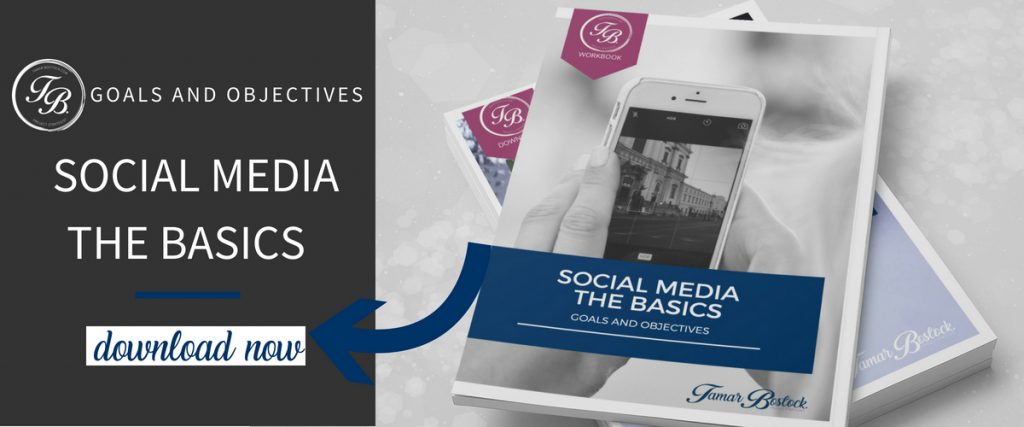Social Media is not about choosing a platform and throwing up some posts. Nor is it about choosing every platform. Social media is all about building a strategy, just like every other part of your business.
If social media is the be all and end all to marketing why is it that businesses are failing to jump on the band wagon?
Surely that can’t be true! According to the Sensis Social Media report, even though 99% of Australians have an internet-enabled device and 84% access the Internet daily, 53% of small business are still not on social media.
Gone are the days of taking out expensive newspaper and magazine ads to get your business out there.
The advantages of social media marketing are huge:
- Global – your audience is the world – social media allows you to connect with anyone, anywhere. You are not confined to just your local area
- Targeted – data segmenting is easy – you can direct your messaging to a specific demographic or location depending on your target group
- Inexpensive – Most platforms are free, or if they cost they are so very low in comparison to more traditional advertising
- Authentic – social media allows you to communicate at a personal level. You can share your story and connect easily with people
- Fast – getting your message out is super fast
- Easy – you don’t need high level skills or expensive equipment – if you can open an app or a browser on your phone you are good to go
If the benefits are obvious why then is the take up rate still so low?
- Resources – social media done well still takes time and strategy, and sometimes it can be hard to see the return on investment. It’s also often a matter of feeling like it’s yet another thing to do in the scheme of all the other things on the list
- Negativity – the adage of all publicity is good publicity does not hold true
- Legal reasons – it can feel like a minefield navigating the legalities of online life, or worse, being totally oblivious to the fact that there is legislation
The key is to have strategies in place to combat any of these concerns. So where do you start to make sense of all the moving pieces?
If you are looking for a quick fix then you should stop reading, because that’s not what this article is offering. In order to do social media well you have to have a clear understanding of the why before you even begin to think about the what. To be honest the what is easy – pretty pictures posted at optimum times using the right filters! A comprehensive social media strategy needs to be comprised of much more. However, it does not need to take an inordinate amount of time.
Let’s begin with how everything fits together.
Strategies – a strategy is the outline of how you are going to achieve something.
Goals – a goal is a general statement of what you want to achieve. It’s a key component of a strategy.
Business goals can include:
- Increase brand awareness
- Generate new leads
- Establish expertise
- Increase sales
- Increase profit margin
Goals should align with the values, vision and mission of a business.
Objectives – an objective is a concrete representation of what is to be accomplished.
Objectives need to be SMART
- Specific
- Measurable
- Attainable
- Relevant
- Timely

Getting started with social media
No doubt you have used social media for personal use keeping in contact with family and perhaps sharing funny memes and videos. However when it comes time to work on social media for a business the goal post changes. It’s no longer about what you like when you like. If you want to get return on investment a and achieve your business goals then social media needs to have a tailored strategy to suit.
Step One
You need to understand what platform will work best for your specific business. While you feel very comfortable with Snapchat, chances are it may not be the best option for marketing your business.
A mistake small businesses make is trying to be on all platforms. Inevitably you spread your resources too thin and end up not connecting properly or authentically with anyone, as you rush between each one.
It’s time to rethink your digital presence and work out which platform/s will really serve you best.
Let’s look at the key platforms from a business perspective.
Facebook – is the biggest social network, with nearly 2 billion active users. Facebook is perfect for connecting people from all over the world with your business.
Instagram – is owned by Facebook and is a visual platform for photos and videos. With more than 500 million users a day it’s a great way to define who you are and what you stand for, as well as to advertise your products or services.
Twitter – based on short text updates of 240 characters or less, Twitter allows you to easily interact with other users. Inevitably, if there is big news-breaking people flock to Twitter to keep up-to-date as the feeds are always current, and information is posted quickly.
Pinterest – is a visual search engine that allows users to save and display content by “pinning” images to boards. Popular categories for pinning are DIY projects, fashion, exercise, beauty, photography and food. If you want to drive traffic to your website, Pinterest is a good addition to your social media strategy.
Linked In – with over 250 million monthly users Linked In is the best platform for professional networking. With strategic posting you can set yourself as thought leader in your industry and promote your business at the same time.
For the vast majority of businesses – Instagram, Facebook and Pinterest are key and having a professional presence on Linked In is also beneficial. So what do you think works best for your business? What are you trying to achieve and where does your target audience spend most of their time? You don’t have to do it all but start somewhere. Choose one platform to begin with.
Step Two
Set your social media goals and objectives. Your business goals align with your business mission values and vision. Your social media goals must be aligned with your overall company goals and values. Rather than focussing on the details, think big picture. Ask yourself, “How is the work that I do on Instagram or Facebook going to impact my business?”
If your business goal is to increase your client base, then your social media goal may be to increase your brand awareness.
From here you will set your objectives.
Here is an example
‘For Instagram we will share photos that communicate our business mission. We will do this by posting three photos a week. The target for each, is at least 30 likes and 5 comments.’
Once you have cemented these steps, it’s time to better understand the platform you want to work with and then begin your content. Plan how to roll that out in a timely strategic manner.
In summary, most social media services are affordable and easy to use, and they can put your business in touch with customers like never before. So what are you waiting for? It’s time to up your digital presence.
Let’s be intentional about it. Here is a planning document to help define what social media means for your business and to help you get started.
What is your single biggest challenge when it comes to using social media? Leave a comment or let me know via email!
Have you booked in for your free no obligation chat?
Talk soon.

